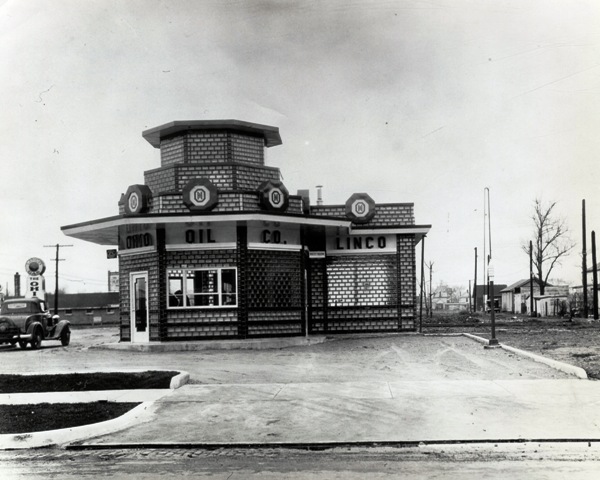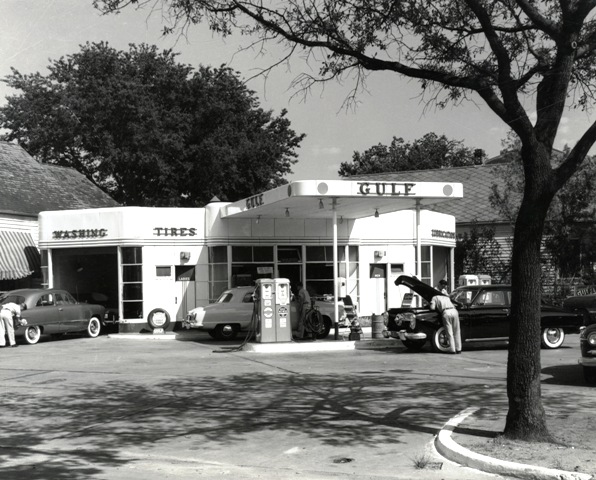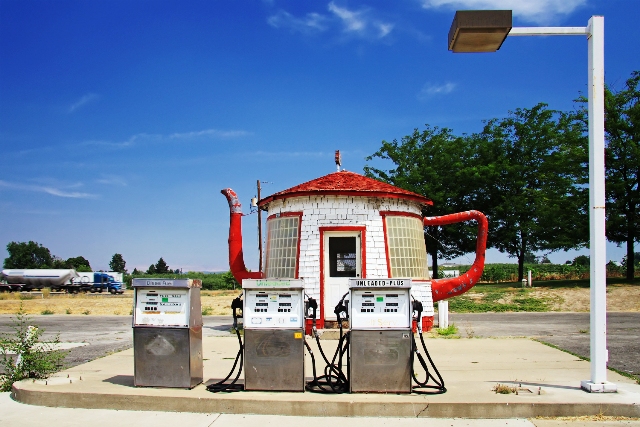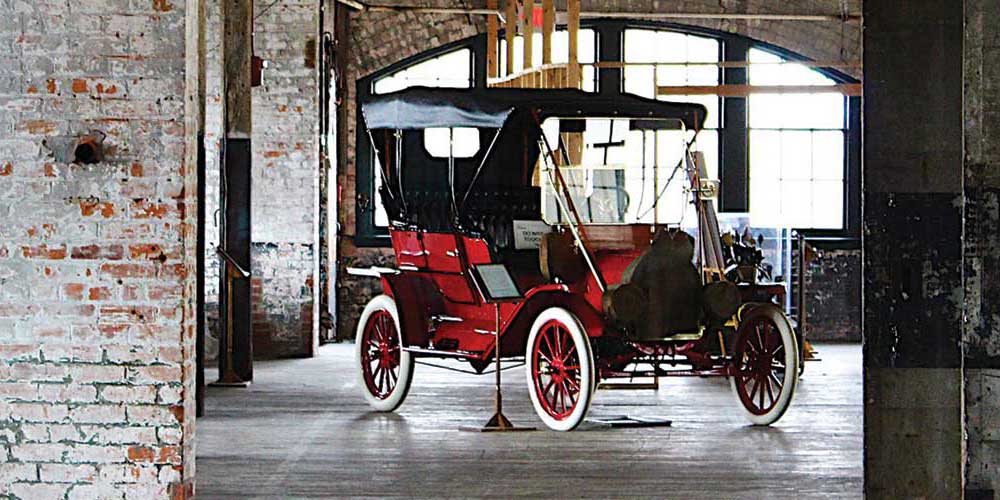By: Robert Tate, Automotive Historian/ Researcher
Images: Courtesy of The National Automotive History Collection.
Posted: 05.05.2015
If you're of a certain age, like myself, you probably remember the days when the gasoline service station attendant would come out to your vehicle and ask you or your parents what type of fuel you would like for your automobile. I remember the early days of the 1960's as a young kid my mother would take her 1963 Ford Falcon into many of the local Detroit area service stations and would be greeted by a service station attendant with a great smile. The attendant would then wash the windows, check the oil, the battery, and check the tires at no additional cost. It was a time when great customer service in our country was a high priority.
 Ohio Oil Co ca 1930s
Ohio Oil Co ca 1930s
This is a story about the early days of service stations in America and their great history from the past to present. The purpose for a service station is to supply the needs of the automobile and truck owners. During the early days of the automobile industry many outlets for gasoline and lubricants were not well known. The first specialized gasoline filling stations came into being between 1905 and 1910. At the turn-of the century, consumers could purchase gasoline in a 1-gallon pre-packed container. As the years would continue, the first location in America where a motorist could actually have gasoline dispensed directly from a storage unit into his or her automobile goes to the Standard Oil Company of California. By the year 1910, the modern underground storage with pumps and hose dispensing had been developed. In 1913, the Gulf Oil Company opened the first gasoline filling station. This station was built with an off-street fueling system that many motorists thoroughly enjoyed. This station would later serve as a guide for future service stations for the rest of the country.
 Cities Service Station ca early 1930s
Cities Service Station ca early 1930s
In 1915, the automobile was becoming a reliable source of transportation for motorists. However, some people still relied on trains when traveling or horses and wagons which had not yet totally disappeared from the streets in certain areas of the country. 1915 also was the year that gasoline became a branded source of fuel for many motorists across the country. In 1926, Sinclair Oil opened three stations with lubrication equipment know as greasing places. Standard Oil in Indiana would later follow this same direction as well. In 1929, there were 121,513 filling stations in the United States. However, during the 1930’s, there was a movement that took place for the operation of gasoline service stations by the major oil companies to start and to become independent dealers. During the early years of the petroleum industry, most stations were owned by oil companies and were operated by their salaried employees. The attendant's shirt and hat was always monogrammed with the same logo that the gasoline pumps featured along with many decorated oil cans.
 Gulf Service Station ca 1950
Gulf Service Station ca 1950
During the war time efforts, women and young college men worked for many of the oil companies as service attendants because of the shortage of the man power work force. To help with the war, many drivers used government issued gas stamps which started on May 15, 1942.This was a time where rationing and restrictions were common practice. The early postwar years did very well as consumers headed to the new car dealerships for their transportation needs. Some popular service stations in the neighborhoods had become an automotive repair center which many consumers took advantage of. The mom and pop service stations along the highways which also sold groceries were being replaced with larger size super markets in most communities. Local and private brand stations operated in many cities. For example, Linco/Marathon, Standard Oil, Phillips, Pure Texaco, Shell, Cities, Sinclair, Mobil, and Gulf were all popular service stations.
 Teapot Dome Service Station ca 1970s by Steve Pavlov
Teapot Dome Service Station ca 1970s by Steve Pavlov
The 1960's brought change within cities and towns everywhere as people used the highways more for traveling. Some service stations offered unusual design themes. For example, like the dome shaped teapot service station. This service station was built in 1922, on what later became U.S. Route 12 in Zillah Washington. It is a former service station built in the shape of a teapot. The unique service station continued operation as a full service gas station for many years. However, today the station is no longer in operation as a full service gas station. It was purchased by the city in 2007 and was rehabilitated and relocated in 2012. Today, it is an example of novelty architecture and listed on the U.S. National Register of historic places.
A special thanks to Robert Tate, Automotive Historian and Researcher, for donating the story to the MotorCities Story of the Week program. Photographs are courtesy of the National Automotive History Collection. (Bibliography: Benjamin Scott & Henderson Wayne. “ Gas Stations-Landmarks of the American Roadside” MotorBooks International 1994. Beckman N. Theodore. “A Brief History of the Gasoline Service Stations” Ohio State University.)
For further information on photos please visit http://www.detroitpubliclibrary.org/ or email This email address is being protected from spambots. You need JavaScript enabled to view it.. Please do not republish the story and/or photographs without permission of MotorCities National Heritage Area.
If you would like to contribute an article for the MotorCities newsletter, email This email address is being protected from spambots. You need JavaScript enabled to view it. or call 313-259-3425.



